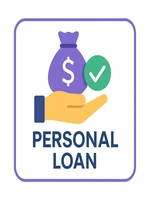Introduction to RBI Guidelines on Illegal Loan Recovery
The Reserve Bank of India (RBI) has set strict guidelines to curb illegal loan recovery practices in 2025. Loanpao educates borrowers on their rights and protections under these rules.
Why RBI Guidelines Matter
These guidelines ensure fair treatment and protect borrowers from harassment. Key points include:
- Harassment Prevention: Bans coercive recovery tactics.
- Legal Compliance: Mandates adherence to laws.
- Borrower Safety: Safeguards personal dignity.
- Transparency: Requires clear communication.
- Penalties: Strict action against violators.
Prohibited Recovery Practices
RBI prohibits the following:
| Practice | Description |
|---|---|
| Harassment Calls | Excessive calls or threats. |
| Public Shaming | Humiliating borrowers publicly. |
| Illegal Seizure | Unauthorized asset repossession. |
| Misrepresentation | Falsifying loan details. |
Note:
What Borrowers Can Do
If facing illegal recovery, borrowers can:
- Complain to RBI: File a grievance online.
- Contact Lender: Escalate to the bank.
- Seek Legal Help: Consult a lawyer if needed.
- Report to Police: For criminal acts.
- Use Loanpao Support: Get expert guidance.
RBI’s Role and Enforcement
RBI monitors compliance and imposes penalties. Key actions include:
- Regular audits of lenders.
- Fines for non-compliance.
- License revocation in severe cases.
- Public notices on violations.
- Updated guidelines annually.
Frequently Asked Questions
Illegal recovery includes harassment or unauthorized asset seizure.
No, calls are restricted to 7 AM - 7 PM.
File a complaint with RBI or police.
Yes, they must follow RBI guidelines.
No, only through legal processes.
File online at the RBI website.
Fines or license revocation.
Yes, within legal boundaries.
Yes, RBI updates guidelines annually.
Loanpao offers guidance on RBI rules and support.

